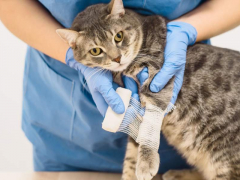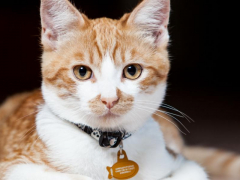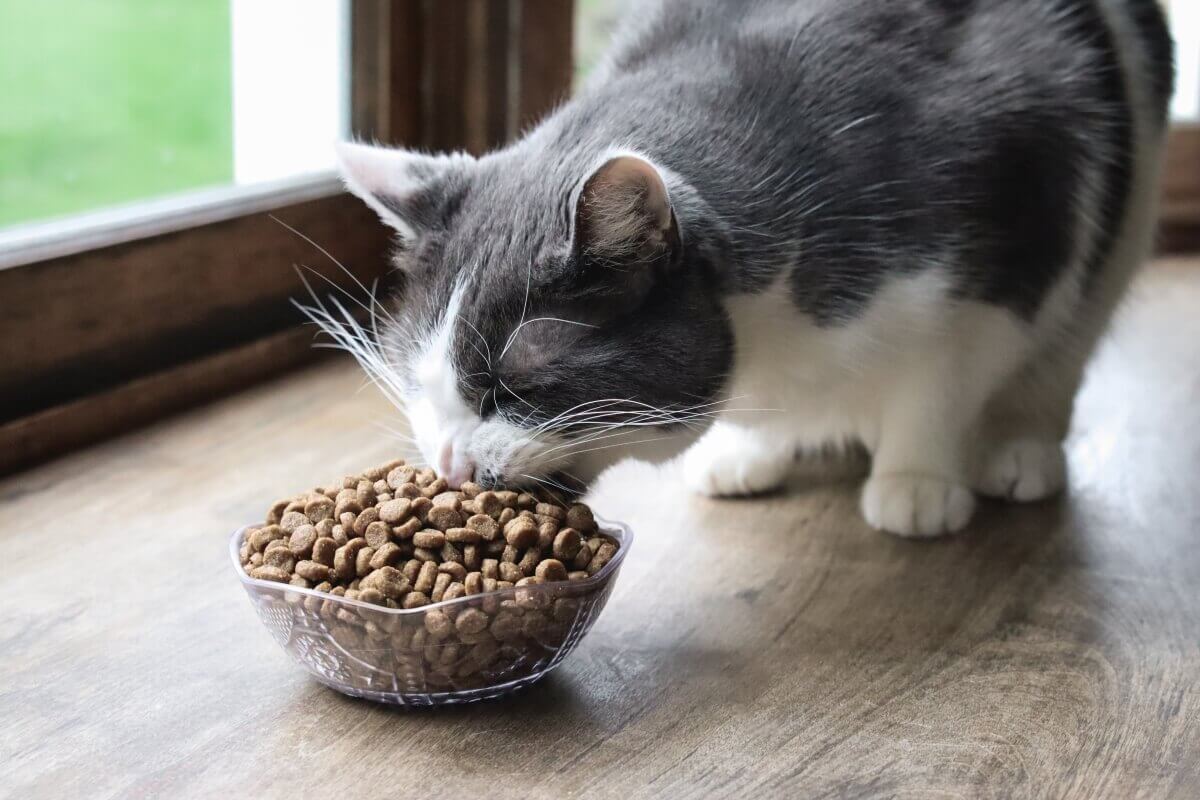
Kirsten McCarthy / Cats.com
A nutritious diet is the cornerstone of great health. One vital component of keeping your cat’s food nutritious is following the appropriate food storage guidelines. Dry kibble, wet cat food, commercial fresh food, homemade cat food—they all have slightly different protocols for keeping them fresh for your cat. Read on to learn everything you need to know about keeping cat food fresh.
Why Is Fresh Cat Food Important?
Cat food is freshest when it first leaves the factory. It spends time in transit, in warehouses, and on store shelves. Once you get it home, freshness declines as soon as you open the bag, can, or package. Cat food can remain fresh for longer if you store it properly. Cat food can spoil, go rancid, become stale, or attract rodents and insects when not properly stored.
Spoiled, rancid, or expired cat food is not safe to feed your cat because it can cause food poisoning. (It’s also unsafe to donate it to other cats in need for the same reasons.) Even just allowing the food to become stale can cause your cat to turn their nose up at it. Cats are a picky and finicky species, so it’s extremely important that their food tastes good to them. Having to toss out food because it has spoiled or because your cat won’t eat it is both wasteful and costly.
Before purchasing or opening cat food, check the package for the expiration date. Make sure this date is far enough out that your cat will finish the food before you reach it. For dry food, check the packaging for any tears or rips, which expose the food to air and compromise its quality.
For wet food, discard any cans that are swollen or bulging (If the food is not past its expiration date, contact the food manufacturer to ask about a refund.) The swelling and bulging result from gas that’s produced and released by bacteria, indicating food spoilage.
Also inspect packages of cat food that you order online. I once had a bulk shipment of my cat’s favorite wet food delivered, and when I finally got around to opening the box, it was full of tiny bugs! Some of the foil lids were punctured, and of course, insects found their way in.
Benefits of Fresh Cat Food
When food is fresh, your cat can better absorb nutrition from it. Nutrients degrade over time, especially when the food is not stored properly. Fresh food is also tastier, which can help finicky cats continue to accept the food. Just as you would not like to eat stale cereal or crackers, neither does your cat want to eat stale kibble or dried-out canned food.
How to Keep Dry Cat Food Fresh
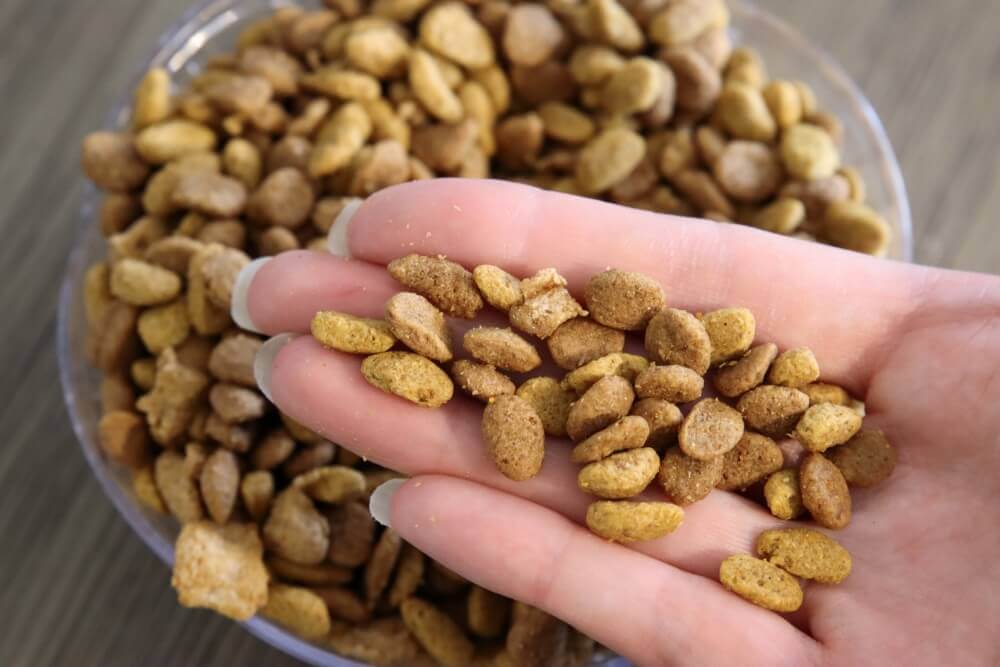
Kirsten McCarthy / Cats.com
When properly stored, dry cat food usually stays fresh for about six weeks after it’s opened. Follow these tips to ensure your cat’s food stays fresh until your cat can finish the bag:
Purchase only as much food as your cat will eat in six weeks. Although you might save money by purchasing larger bags of food, the cost savings are negligible if you have to toss the food out before it’s gone. If you’re only feeding one cat or if your cat has a small appetite, buy smaller bags.
Store the food in its original package. Pet food manufacturers do extensive research to create packaging with special liners that keep the food fresh as long as possible.
Roll down the top of the food bag and secure it with a clip. Squeeze out as much air as possible when closing the bag.
Use an airtight storage container. To protect the food from the air and keep insects out, place the entire package of food inside another storage container.
Store the food in a cool, dry place. Air, heat, and humidity or moisture will degrade cat food faster. The pantry is usually a great place to store cat food.
How to Keep Wet Cat Food Fresh
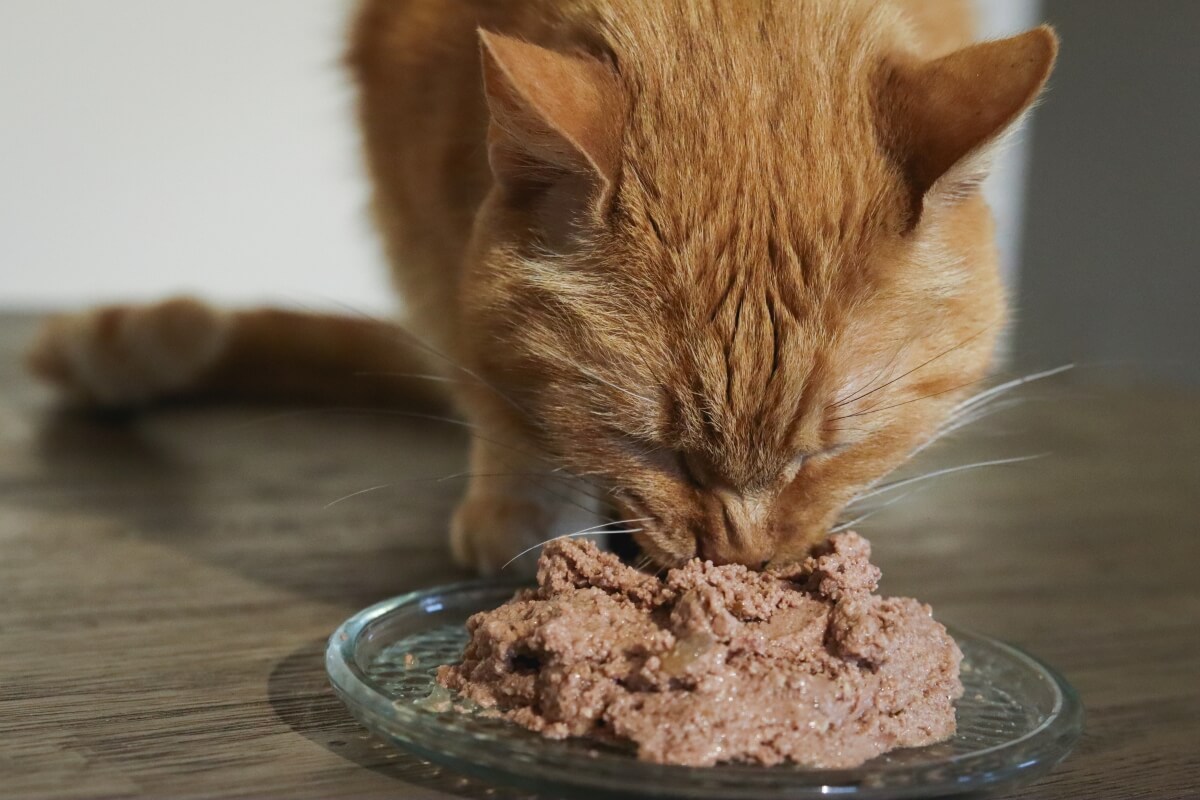
Kirsten McCarthy / Cats.com
Wet cat food is usually shelf stable for years when it is properly stored in a cool, dry place. After opening, all canned cat food must be refrigerated. Some commercial food companies state that opened canned food might last as long as five to seven days when stored in the fridge in an airtight container. However, it’s best to use leftover wet food within 72 hours.[1] To keep your cat’s wet food fresh and safe, follow these tips:
After opening, store the leftover food in the refrigerator. You can keep leftover wet cat food in the original can and use a plastic airtight can lid, or transfer it to an airtight container.
Choose the right size cans. So food doesn’t go to waste, buy smaller cans if your cat is young or has a small appetite and larger cans if your cat has a big appetite, or if you’re feeding multiple cats.
Do not leave wet cat food out all day. Wet food will grow bacteria and spoil if it’s left out at room temperature for too long. You can safely leave wet cat food out for about one to two hours. After that time, refrigerate or throw out leftovers.
Warm up cold food before serving. If your cat turns up their nose at leftover cold wet food straight from the fridge, warm it in the microwave. Just five to 10 seconds should do it. Keep in mind that microwaving can heat food unevenly. Before serving, stir the food and touch it with your finger to make sure it won’t burn your cat’s tongue.
How to Keep Fresh Cat Food Fresh
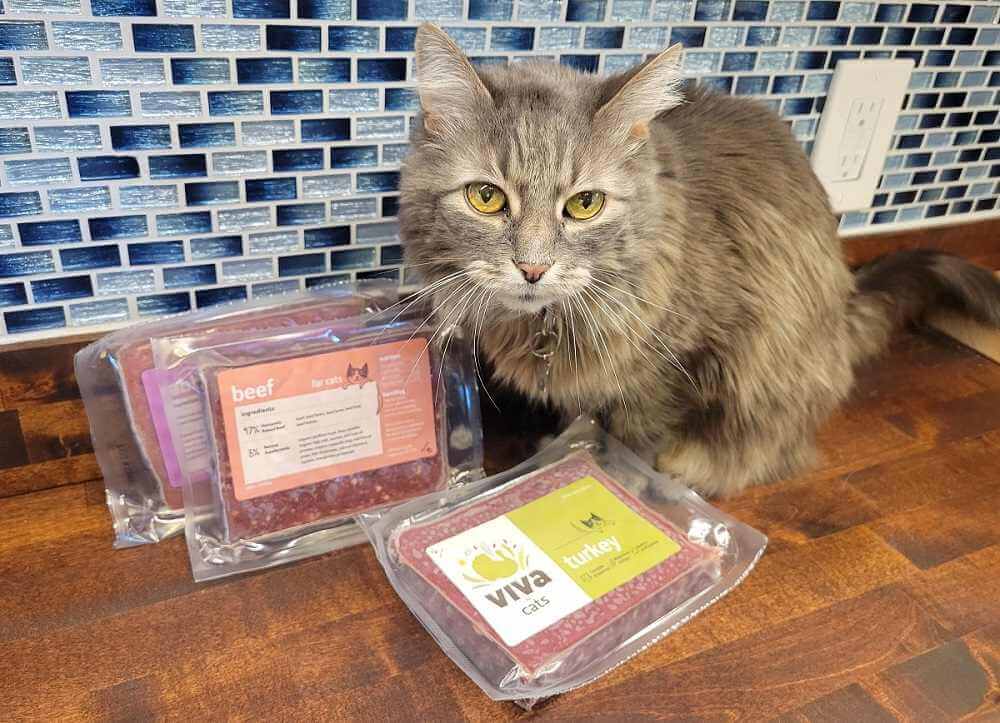
Proper storage is crucial whether you get your fresh cat food from the store or shipped to you. Kate Barrington / Cats.com
Commercial fresh cat food is usually shipped frozen. Store the packages in your freezer until you’re ready to use them. To thaw, place a frozen package in your refrigerator overnight. Commercial fresh cat food does not usually contain any preservatives, so it must be used within a few days. The actual length of time the food can safely be stored in the fridge should be listed on the label. To keep commercial cat food fresh:
Store leftovers in the refrigerator. Follow the specific product’s storage instructions, and use the food within the amount of time indicated.
Do not refreeze thawed food. Once frozen food has been thawed, keep it in the fridge and use it within the allotted time.
Be careful if food arrives thawed. Commercial fresh cat food is shipped on ice to keep it frozen until you can place it in your own freezer. If you open the package and find that the food has already thawed, contact the company for instructions on how to proceed.
Do not leave fresh cat food out all day. Fresh food will grow bacteria and spoil if it’s left out at room temperature for longer than one to two hours. After that time, refrigerate or throw out leftovers.
How to Keep Homemade Cat Food Fresh
Some dedicated cat owners make their own cat food. Like the food you cook from scratch for yourself, homemade cat food does not contain any preservatives. Store homemade cat food in the fridge and use it within five days of making it. When making your cat’s food, getting the right balance of nutrients can be tricky. Use only vet-approved recipes, and talk to your veterinarian or a veterinary nutritionist before getting started.
Make food in bulk and freeze it. When making a large batch, portion out smaller servings and store them in the freezer, then thaw overnight in the fridge.
Do not refreeze thawed food. Once thawed, use up the food or toss it within five days.
Do not leave homemade cat food out all day. Homemade food spoils if it’s left out at room temperature for more than a couple hours. After that time, refrigerate or throw out leftovers.
-
Feeding your cat. Cornell University College of Veterinary Medicine. Published June 21, 2023.
